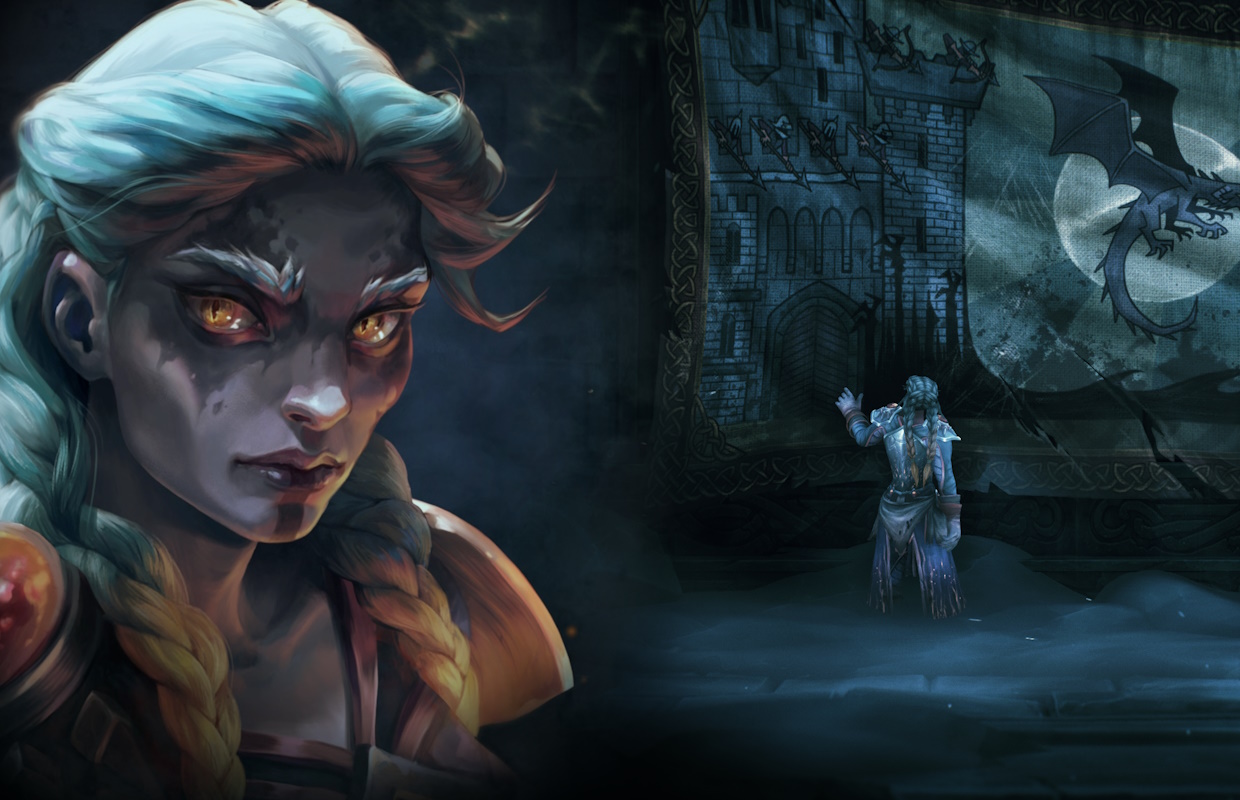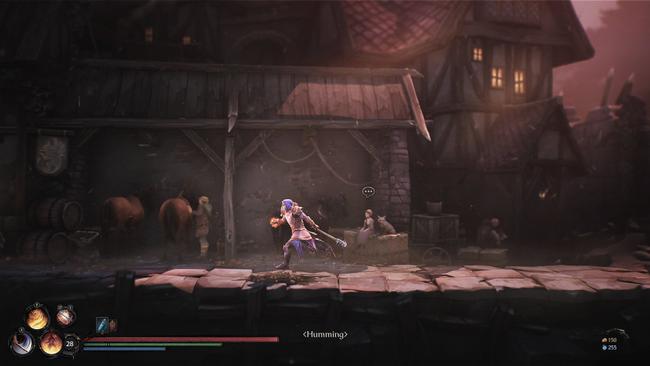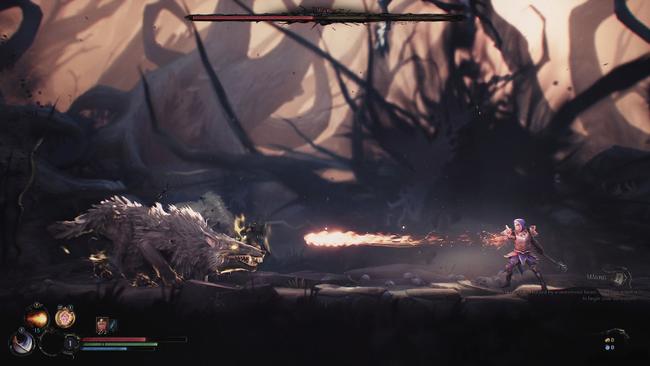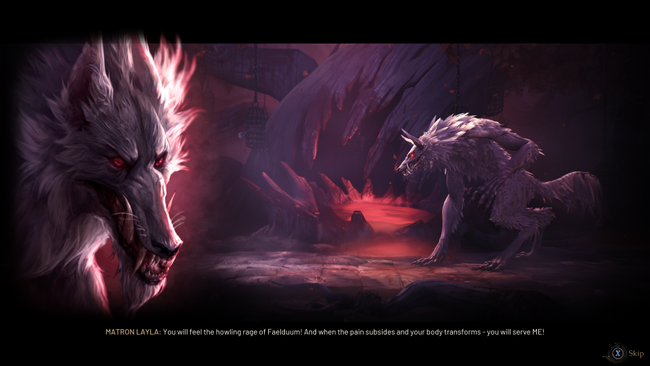
Mandragora: The Whispers from the Witchwood seamlessly blends two popular game sub-genres – ‘Metroidvania’ exploration action and the challenging, tactical style of ‘Soulslike’. With just these two references, even if you know nothing else about Mandragora, you can likely anticipate a fair idea of its gameplay dynamics based on your familiarity with these genres.
As a gaming enthusiast, I’ve been eagerly waiting to dive into Mandragora for quite some time now. With its intriguing dark fairytale fantasy setting from a Hungarian indie studio, it promised an unique blend of immersive action RPG combat, captivating exploration, and a dash of magical quirkiness. However, upon playing it, I found myself feeling rather indifferent towards a game that was decent but lacked the spark to make it truly remarkable.

The foundational concept of Mandragora presents a simple yet engaging scenario: You assume the role of an Inquisitor from Faelduum, who inadvertently becomes possessed by a witch following a botched execution. Driven to restore your allegiance to the kingdom, you embark on a quest to encounter another sorceress. This adventure, as expected, will significantly impact the destiny of the realm.
Similar to its “Souls” series counterparts, Mandragora doesn’t follow a straightforward storyline from start to finish. Instead, you’ll encounter sparse Non-Player Characters who offer brief exchanges of dialogue, providing insights into the world’s condition, their role within it, and perhaps some history about the upcoming region you are about to traverse. The narrative in Mandragora is serviceable but not exceptional, as you uncover details about the Witches, your realm, and a peculiar substance called Entropy. Primarily, the game’s story functions as a means to facilitate exploration and combat.
In the game, certain Non-Player Characters (NPCs) you encounter can decide to join your settlement, mainly functioning as merchants and artisans. For instance, there’s Ulfar, the blacksmith who specializes in creating weapons and armor; Alannah, the alchemist capable of brewing various potions; and Gerald, the explorer who assists you in mapping out new territories. As the story progresses, these NPC allies become increasingly important as they help you prepare for upcoming challenges. I must add that I find their oil-painting-style portraits quite appealing.

Initially, I found Mandragora’s combat rhythm, balance, and variety somewhat off-kilter during the early stages of the game. Combat primarily involved using only a handful of basic weapon attacks and a dodge roll, leading to repetitive exchanges where I would swing a few times, dodge an easily predictable counterattack, then swing again. This pattern was often followed by another dodge, creating a slow tempo in combat. Moreover, many enemies seemed to require more hits than necessary to defeat, prolonging each encounter and disrupting the game’s overall pace. Fortunately, Mandragora offers customization options in its menu, allowing you to adjust enemy damage and stamina costs to some extent, which is a thoughtful inclusion for accessibility.
It seems like I may have chosen the wrong initial character class in Mandragora. This game offers six starting classes, such as the agile Assassin and the magic-using Mage. Instead, I opted for the Vanguard, who is a paladin-like figure armed with sword and shield, focusing on strategic attacks and occasional shield blocks. Although this game allows some degree of multiclassing, I wanted to explore if the Vanguard’s later skills would be beneficial, so I mostly stuck with that choice during my playthrough. It’s quite possible that a different class selection or weapon choice could offer a significantly distinct gaming experience compared to mine.
One notable flaw in Mandragora lies in its choice of boss types and design. Instead of introducing fresh challenges, many bosses are just larger iterations of common opponents you’ve faced numerous times. For instance, there are several oversized rats that you defeat multiple times, and similarly-sized spiders. You’ll also encounter three to four Giant enemies as well as three to four giant zombie warriors. The major storyline bosses like the Necromancer or Marionette do offer some uniqueness, but they are exceptions rather than the rule.

Similar to its narrative and battles, Mandragora’s world design is satisfactory, but not particularly exceptional. You’ll encounter standard elements of exploration such as areas that can only be accessed by improving your movement abilities. Most of the benefits from revisiting earlier locations and exploring are blueprints for crafting new gear at camp.
Concerning the craftsmen from my previous discussion, by the late stages of the game, it’s essential to acquire superior weapons and gear to combat the final adversaries. However, you’ll upgrade your craftsmen and procure these items, but the resource demands for this task are quite excessive. The required money and item drops exceed what one would typically gather during regular gameplay, making it feel like an unnatural grind. It seems as though the game wants you to repeatedly traverse areas, mindlessly slaughtering weak enemies over and over again.
Unfortunately, just as I finished playing Mandragora, Primal Game Studio rolled out a major update with numerous balance changes such as enemy stats, skill costs, crafting requirements, and drop rates. It seems they’ve listened to feedback like mine and are working diligently to improve the game by addressing those concerns, which is commendable. If I were to re-read this review in a few months, many of my issues might have been substantially addressed. However, I can only comment on my personal experience with the game at this time.
From a written perspective, Mandragora seems to offer an array of enticing elements for numerous gamers. It boasts multiple side-missions with attractive incentives, hidden treasures such as secret chambers and optional adversaries to discover, and a vast selection when it comes to character customization and weapon choices. However, despite these promising aspects, the overall experience feels rather mechanical at best.

In Mandragora: Whispers of the Witch Tree, I find it challenging to identify any standout aspect that truly shines. The fighting is functional, the storyline is passable, and the exploration is decent enough. There’s a sense of familiarity in moving around the map and discovering hidden treasures, much like in search-action games, and there’s a level of enjoyment in the gameplay that closely mirrors that found in soulslike games. However, overall, I find myself feeling rather neutral about it.
6
In addition, “Whispers of the Witch Tree: Mandragora” can also be played on PlayStation 5 and Xbox Series X|S platforms.
Read More
- 50 Ankle Break & Score Sound ID Codes for Basketball Zero
- Who Is Harley Wallace? The Heartbreaking Truth Behind Bring Her Back’s Dedication
- 50 Goal Sound ID Codes for Blue Lock Rivals
- Mirren Star Legends Tier List [Global Release] (May 2025)
- League of Legends MSI 2025: Full schedule, qualified teams & more
- 28 Years Later Fans Go Wild Over Giant Zombie Dongs But The Director’s Comments Will Shock Them
- Pacers vs. Thunder Game 7 Results According to NBA 2K25
- Basketball Zero Boombox & Music ID Codes – Roblox
- 100 Most-Watched TV Series of 2024-25 Across Streaming, Broadcast and Cable: ‘Squid Game’ Leads This Season’s Rankers
- Nintendo Switch 2 System Update Out Now, Here Are The Patch Notes
2025-05-09 05:37